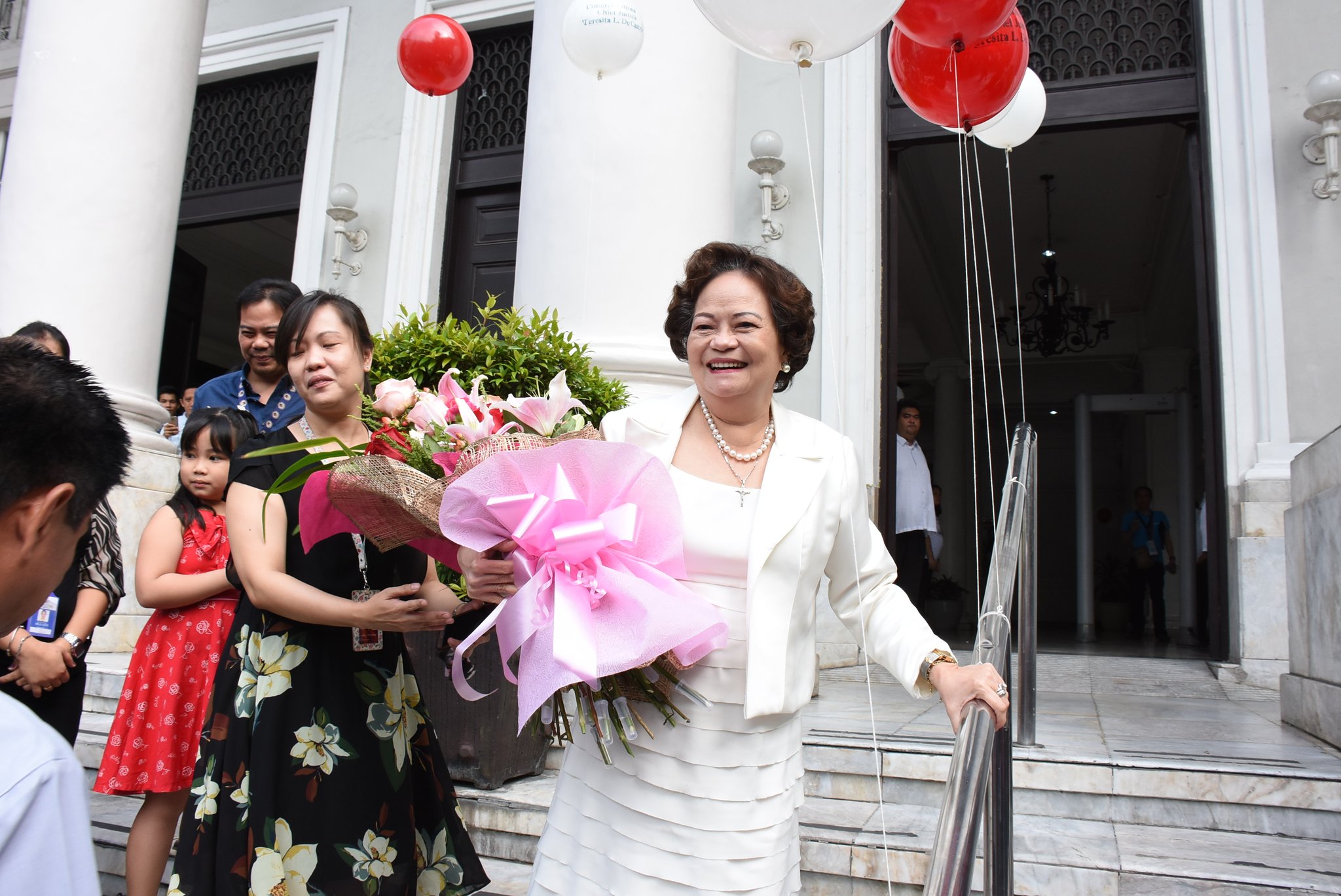Forty-one Days as Chief Justice: A New Norm

Photo from the Supreme Court PIO Twitter page.
THE FALLOUT from the Supreme Court’s (SC) ouster of former Chief Justice Maria Lourdes Sereno last June is continuing.
On Saturday, August 25, Justice Secretary Menardo Guevarra announced President Rodrigo Duterte choice of De Castro as the next Chief Justice. It was not a reward for her involvement in removing Sereno, but a decision based on seniority, Duterte told journalists.
To judge from the reports on the appointment, the media seemed satisfied that a normal transition in the Supreme Court had taken place.
But four congressmen led by Albay Representative Edcel Lagman filed last August 23 an impeachment complaint against seven SC justices, accusing them of culpable violation of the Constitution and betrayal of public trust for voting in favor of the quo warranto petition that invalidated Sereno’s appointment to the High Court’s top post. This included the newly appointed chief justice.
De Castro formally assumed the CJ position on August 28 and will hold the title until her retirement in October, making her term a very brief 41 days — the shortest in the SC’s history.
Media reported the development and took note of the mixed reactions to De Castro’s rise to the Chief Justice position. Some of the reports dutifully listed her career milestones from 1973 to present, without including the fact that De Castro had played a prominent role in Sereno’s ouster. News coverage did not question what would be achieved by an appointment of such brief tenure.
CMFR monitored reports from the Manila broadsheets Manila Bulletin, the Philippine Daily Inquirer and The Philippine Star; primetime newscasts 24 Oras (GMA-7), Aksyon (TV5), News Night (CNN Philippines) and TV Patrol (ABS-CBN 2); as well as selected news websites from August 23 to 29, 2018.
Keeping Tabs
The media did report the impeachment complaint filed by the congressmen on August 23, but this was immediately sidelined by De Castro’s appointment as Chief Justice in the weekend. Subsequent reports then focused on the reactions to her selection, noting, for instance, the differences in opinion in among lawmakers and stakeholders such as Churchmen and the public.
By week’s end, the reports had zeroed in on De Castro’s assumption to office on August 28 and her defense against criticisms, including the impeachment complaint which she said she has no time to think about.
The media also picked up on Malacañang’s views on the issue, with Presidential Spokesperson Harry Roque downplaying the merits of the impeachment complaint. They also mentioned De Castro’s saying that “technically” she is the first woman Chief Justice of the Philippines.
Tame, Unquestioning
The reports mentioned De Castro’s credentials as a government official, especially the role she played in high-profile cases. But they did not look into the implications or problems that might arise during her short tenure.
They failed to connect the dots in her decisions in previous high-profile cases, such as former strongman Ferdinand Marcos’ burial at the Libingan ng mga Bayani (2016), the extension of martial law in Mindanao and the quo warranto case against Sereno (2018), in all of which she voted in favor of government’s position.
ABS-CBN News Online published her profile on August 24, including how she voted on key issues. But the report did not include an analysis on what her pattern of voting suggests about her future decisions. (PROFILE: Teresita De Castro)
Given her voting record, will her leadership affect pending cases before the Supreme Court as the Presidential Electoral Tribunal (PET) such as the electoral protest of Fedinand “Bongbong” Marcos, Jr. and the oral arguments on Duterte’s withdrawal from the International Criminal Court (ICC)?
Failing to examine the implications of this problematic appointment, the media has once again accepted Duterte’s manipulative politics as a norm.
Leave a Reply